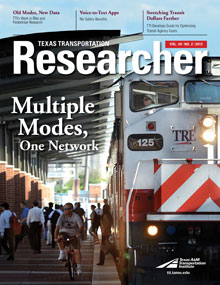Coal, petroleum products, aggregate, grain, iron ore and steel products float economically over rivers in the United States and along the Gulf Intracoastal Waterway. It’s estimated that over 600 million tons of material are transported over the country’s waterways every year.
The Texas A&M Transportation Institute’s (TTI’s) Center for Ports and Waterways has conducted three studies for the U.S. Army Corps of Engineers (USACE), the most recent of which concluded in January 2013. The purpose of all the studies was to determine the viability of maintaining the country’s inland waterways.
Are they still a cost-effective method for moving vast tons of freight? The answer is a resounding yes. TTI estimates that an annual savings of $2.85 billion (almost 100 percent) was realized in 2010 by using the water mode over the lowest-cost land option. The cheapest land alternative cost twice as much as shipping by water.

“We found there are substantial savings for almost every type of commodity we looked at,” says Jim Kruse, director of TTI’s Center for Ports and Waterways. “While there are one or two exceptions, it’s a definite savings to go by water.”
The water advantage dries up rapidly if other types of transportation are required to transport the load to or from the water-based origin point. “The facility where one is loading or off-loading needs to be close to the water,” Kruse notes. “By the time you add a truck or rail haul to and from an off-water site — plus the expense of moving the load from one conveyance to another — the handling destroys the cost benefit. Water transport is so cost effective because facilities have located near or on the water.”
USACE uses TTI’s research findings to demonstrate the importance of America’s inland waterways to the U.S. Congress. “TTI’s transportation rate analyses have provided the Corps with valuable modal cost data used to justify navigation lock and dam recapitalization investment decisions,” notes Lin R. Prescott, regional economist with USACE.
“Barge transportation is what enables this country to feed the world,” says TTI Associate Research Engineer Annie Protopapas. “A large portion of the grain comes down the Mississippi from the Midwest to the Ports of South Louisiana and New Orleans to be exported.”
